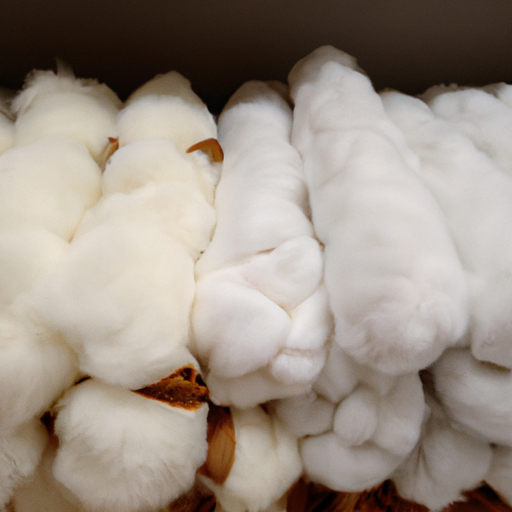Do you love snuggling under a warm, fluffy down duvet? Many people enjoy the luxurious comfort that high-quality down duvets provide. However, if you suffer from allergies or asthma, you may wonder if down-filled bedding is the best choice for your sleep health.
In this beginner’s guide, we’ll explore whether down duvets can trigger unpleasant allergic reactions. You’ll learn what causes feather allergies, key symptoms to watch for, and how to choose hypoallergenic bedding alternatives. Read on to nestle into allergy-free comfort each night!
What Causes Feather and Down Allergies?
Before delving into whether down duvets specifically can spur allergies, let’s cover what causes feather allergies in general. The potential culprits include:
- Dander: Microscopic pieces of skin and feather dust shed by birds. This dander often clings to the feathers and down during processing.
- Dust mites: These microscopic bugs feed on dead skin cells and thrive in bedding. Their droppings also trigger allergies.
- Molds or mildew: Improper storage of feather bedding may allow mold growth. Inhaling mold spores stirs up allergic reactions.
For most people with feather allergies, the primary offender is dander. So even if your down duvet seems pristine, microscopic allergens may lurk within.
Common Allergy Symptoms to Watch For
Wondering if your stuffed up nose and itchy eyes stem from your down-filled bedding? Pay attention to these common feather allergy symptoms:
- Sneezing fits
- Runny, stuffy nose
- Itchy, watery eyes
- Wheezing and coughing
- Skin irritation and hives
- Congestion and sore, scratchy throat
More severe allergic reactions like troubled breathing warrant immediate medical care.
Can Down Duvets Themselves Cause Allergies?
So can snuggling under that fluffy down-filled duvet actually spur allergy attacks? Let’s break down the debate:
The Case Against Down Duvets
- Controversial link to lung inflammation: In the late 90s, doctors named an unusual lung inflammation “feather duvet lung” when it seemed tied to down bedding. However, the link hasn’t held up under scrutiny.
- Allergen concern still lingers: While the lung inflammation link faded, down still harbors dander, dust mites, and other allergens. So it’s not hypoallergenic.
- Significant allergies still possible: Even though unlikely to cause this specific lung reaction, down can still clearly trigger significant feather allergy attacks like asthma episodes.
The Case For Down Duvets
- Synthetic irritants possible too: Alternative beddings often utilize synthetic fibers that may bother those sensitive to certain chemicals.
- Proper care reduces allergens: With frequent washing, proper storage, and dual covers, down duvets contain far fewer allergens. High thread counts also help.
- Reactions still rare overall: Considering down’s popularity, feather allergy cases specifically tied to duvets seem relatively rare. Most tolerate down bedding well.
So while down duvets themselves likely won’t cause severe, alarming inflammation for most people, they still aren’t hypoallergenic. Those quite sensitive to feathers should steer clear.

Choosing Hypoallergenic Down Alternatives
Rather than risk plush down bedding triggering your allergies, hypoallergenic synthetic alternatives provide cozy comfort without the sneezing and sniffles. Beneficial options include:
Down-Alternative Comforters
These mimic the billowy feel of down using synthetic fills like:
- PrimaLoft: Fine microfibers engineered to replicate goose down.
- Polyester: Budget-friendly synthetic with down-like texture.
Since they contain no feather proteins, down alternatives usually suit allergy sufferers well.<center>
| Down Alternative Fill Types | |
|---|---|
| Fill Material | Description |
| PrimaLoft | Soft, microfiber fill engineered to mimic luxury goose down |
| Polyester | Lightweight synthetic fill with down-like puffiness |
| Microfiber | Thin synthetic fill offering warmth at an affordable price point |
| Cotton | Breathable natural fill; not as lofty as synthetics |
Allergy-Friendly Duvet Inserts
For those who love the weight and feel of a duvet, allergy-friendly duvet inserts provide that experience without the allergens. These covers slip around insert fills like:
- Bleached cotton
- Bamboo rayon from sustainable bamboo forests
- Microfiber polyester blends
Allergy Bedding Encasements
Adding an encasement around your comfortable down-alternative comforter or duvet insert offers an extra barrier against allergens. High-quality bedding encasements are woven tightly enough to block dust mites and other irritants from seeping through.
Additional Allergy Bedding Tips
- Wash bedding weekly in hot 130° plus water
- Freeze stuffed animals overnight monthly to kill dust mites
- Use HEPA air purifiers in the bedroom
- Buy organic beddings if sensitive to chemicals
- Add a dehumidifier to keep bedroom humidity under 50%
When to See an Allergist
If you try down alternative bedding but allergy issues persist, consult an allergist. Through skin prick testing and other diagnostics, they can pinpoint whether dust mites, mold, pet dander, or other irritants trouble you. They may suggest additional tactics like:
- Immunotherapy (“allergy shots”)
- Prescription antihistamines or decongestants
- Allergen avoidance and improved air filtration
With professional guidance, you can rest easy and breathe freely even with allergy or asthma troubles.

Some Important for Down Duvets and Allergies
- Although lacking strong clinical evidence now, down duvets may cause issues for those highly sensitive. The fill does harbor allergens like feather dander.
- Pay attention to allergy symptoms like congestion, coughing, and skin irritation after bedding changes.
- Hypoallergenic down alternatives like PrimaLoft and quality duvet inserts provide cozy comfort without the allergens.
- See an allergist if symptoms persist despite bedding adjustments. They can pinpoint causes and advise allergy relief tactics.
I hope this beginner’s guide provided useful insights into whether down duvets can spur allergies! While likely fine for many, take care swapping bedding if you suffer from feather sensitivity or asthma.
Frequently Asked Questions
Q: What exactly causes a feather or down allergy?
A: The most common culprits are microscopic bits of dander and feather dust that cling to down and also dust mites that thrive in bedding. For some, mold or mildew may play a role too.
Q: If I’m allergic, what bedding should I choose instead of down?
A: Look for down alternatives featuring fills like PrimaLoft or polyester microfiber that don’t contain feather proteins. Allergy-resistant duvet inserts with covers made of materials like cotton, bamboo rayon, or synthetic microfiber blends also work well.
Q: Could my runny nose and sneezing be from something other than my down duvet?
A: Yes, symptoms like sneezing, stuffy nose, wheezing, and skin irritation have multiple possible causes. Consult an allergist to diagnose through testing if adjusting bedding doesn’t provide allergy relief.
Q: Why might someone tolerate down bedding okay for years then suddenly have issues?
A: Allergies can develop over time with increased exposure. Also laundering less frequently or improper storage allowing more dust mite or dander buildup raises allergen levels in existing beddings.
Q: I love down’s luxurious feel. Any way to enjoy it safely with allergies?
A: Proper, frequent laundering and storage helps keep down’s allergen levels lower. Protective duvet covers, high thread count linens limiting dust mite entry, and air purifiers also aid those wanting to continuing enjoying down bedding.



